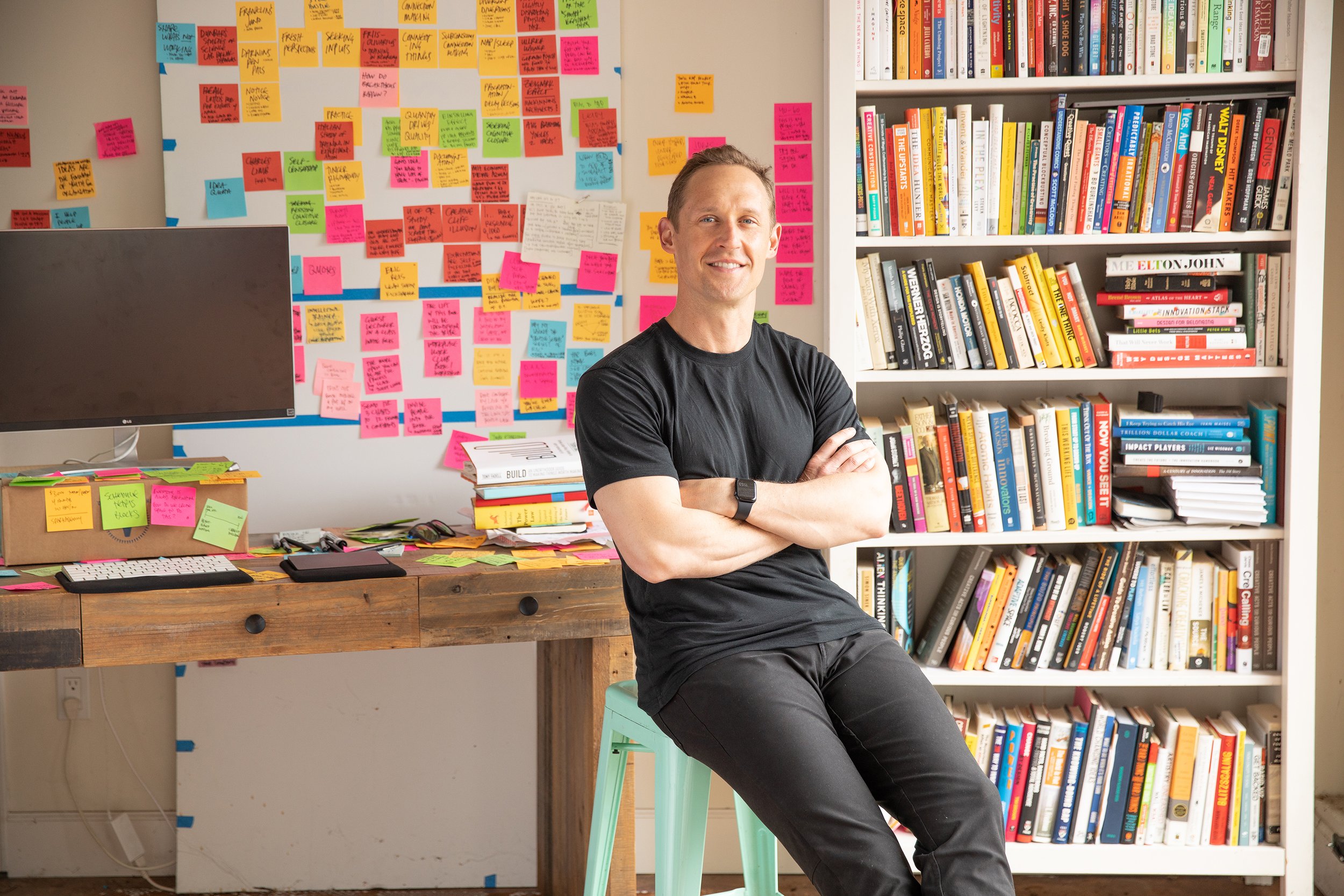
Methods of the Masters
A blog on the art & science of creative action.
Be Transparent
It's tempting to think, "We shouldn't let them know that the product isn't perfect yet, that we're still trying to get it right..." when working on something new. But often, that's the exact wrong instinct…
An R&D mystery
My friend Mar Hershenson and I have been speaking with some amazing female founders lately. In a recent conversation, Mar asked a spectacular question that led to a profound insight:
Do What's Next To Discover What's New
The Berkeley Computer Corporation is one of those legendary influencers in the early days of the computing revolution, akin to the famous Homebrew Computer Club that sparked Wozniak's insights and led to the formation of Apple…
Space For Inner Dialogue
{{"uhhhh... uhhhhhhh.... mmmmmuhhhh..." That's what it sounds like when my team is waiting for me to say what I'm thinking. Especially when we're working on a creative challenge, or trying to articulate insights, sometimes I feel like I just. can't. quite. say it…
Reviewing Old Notes
"A link between a problem and a solution depends heavily on the simultaneity of their 'arrivals.'” - Jim March in his classic HBR Interview, "Ideas as Art" Unless you're often pondering the challenge of putting new things into the world, this obscure quote might be a bit of a head scratcher. 'Simultaneity of arrivals'?? I know…
The Wisdom Of Kevin Kelley
One of my d.school colleagues (the fabulous Lisa Kay Solomon) shared this exceptional list of 68 pieces of unsolicited advice from WIRED founder Kevin Kelley. He composed the list in honor of his 68th birthday. Here's one of my favorites…
Reduce Perceived Commitment
Pithy text message at the end of a grueling workout: "Experiment: I'm opening a Clubhouse room about our class at Stanford to see if anybody wants to talk about it. Hop on for a few?" And with that paltry provisioning, a co-instructor got me to jump into a new app, talking to a "room" full of strangers, right after I'd finished a workout and was still covered with sweat, with absolutely zero notice - something I would never have agreed to in advance…
How to Deal with Imposter Syndrome
My friend Mar Hershenson and I have been speaking with some amazing female founders lately. In a recent conversation, Mar asked a spectacular question that led to a profound insight: "I hear from a lot of female founders that they struggle with imposter syndrome. How have you interacted with feeling like you don't belong, like you're out of place?"
Lowering the Cost of Failure
Shortly after I wrote yesterday's post about the Toy Story 3 team at Pixar, a longtime friend and mentor sent me Mark Rober's TED Talk, "The Super Mario Effect". I'd seen it a while ago, and thoroughly enjoyed it, so I almost archived the message without much thought; but his email made me curious to review it, and I'm glad I did!
What Offends Your People?
I was blown away by this short anecdote, which not only encapsulates a special aspect of Pixar's culture, but also sets a high water mark for the ambitions any leader could hope to instill in a creative team…
The Quest Mentality
Jim March is a legendary organizational theorist* who posited that organizations create value (or "new knowledge") in one of two ways: either by exploring new possibilities or exploiting old certainties (ie executing known opportunities with known resources). His research dealt with how to balance the tradeoffs inherent in larger organizations seeking to do a bit of both, as they generally compete for the same pool of scarce resources…
Eliminate Barriers to Communication
"We had made the mistake of confusing the communication structure with the organizational structure," says Pixar's Ed Catmull, in his fantastic memoir, Creativity, Inc. He's describing the source of the tension that threatened to drive a wedge into the heart of the organization after the spectacular last-minute rescue of Toy Story 2. Efforts to protect folks' attention resulted in stultifying red tape that impeded the free flow of ideas and communication, the beating heart of the creative team…
Flip One Problem
I've noticed a fascinating pattern that, when solving a problem, my default orientation is towards quality: "I just need a good idea." I don't realize I'm thinking this way, but I often am. And realizing it is the first step to a solution…
Why the Shoe Fit Mark Parker
Mark Parker, former CEO and now Executive Chairman of Nike, is in the pantheon of Steve Jobs when it comes to design-forward innovation. He's one of the few designers to drive innovation at the level that he did from the chief spot…
Your Big Idea is Waiting, a Short Walk Away From Your Desk
Arthur Koestler defined creativity, “The collision of two apparently unrelated frames of reference.” Collisions, or connections more broadly, often get the spotlight when it comes to creative thinking. But what enables unexpected connections?
The Founder Comes First
The fundamental atomic structure of an innovation is comprised of at least two molecules: the idea and the founder. While these two are inseparably linked, the natural tendency is to overly-fixate upon the idea side of the compound…
Radical Collaboration
Acclaimed HBS Professor Linda Hill makes a regular practice of choosing a particularly promising 22 year old to co-author her books with her. Talk about appreciating the perspective of a novice!…
Assorted Unexpected Innovations
What do soap operas, Chuck-E-Cheese, and the Michelin Guide have in common? They've all got unexpected origin stories, originally developed as products to help sell other products, that became innovations in their own right...
Nike's Secret Weapon
Phil Knight's "Shoe Dog" has to be one of the best memoirs on entrepreneurship on the market. It's filled with reasons not to do something as crazy as start a company. But lest I digress, I wanted to mention what I consider to be Nike's secret weapon: Bill Bowerman's insatiable desire for victory on the track, and in particular, his willingness to experiment wildly to achieve it. He may be the quintessential example of "ideaction" embodied in a single individual. As Oregon's track coach, he had access to a "laboratory" of sorts: his athletes and their performance. But the thing that distinguishes him in my mind is the relentlessness and precision with which he experimented on his team's footwear in search of an edge…
Inspiring Inspiration-Seeking
Did you know that a classic innovation that reinvented the athletic shoe category came from gazing upon a kitchen appliance? Much like Apple's Steve Jobs was inspired by Cuisinart, Nike had its own flash of inspiration - albeit in the grip of a different appliance. The two stories that follow taken from the exceptionally-entertaining, "Shoe Dog," by Nike's creator, Phil Knight…




















